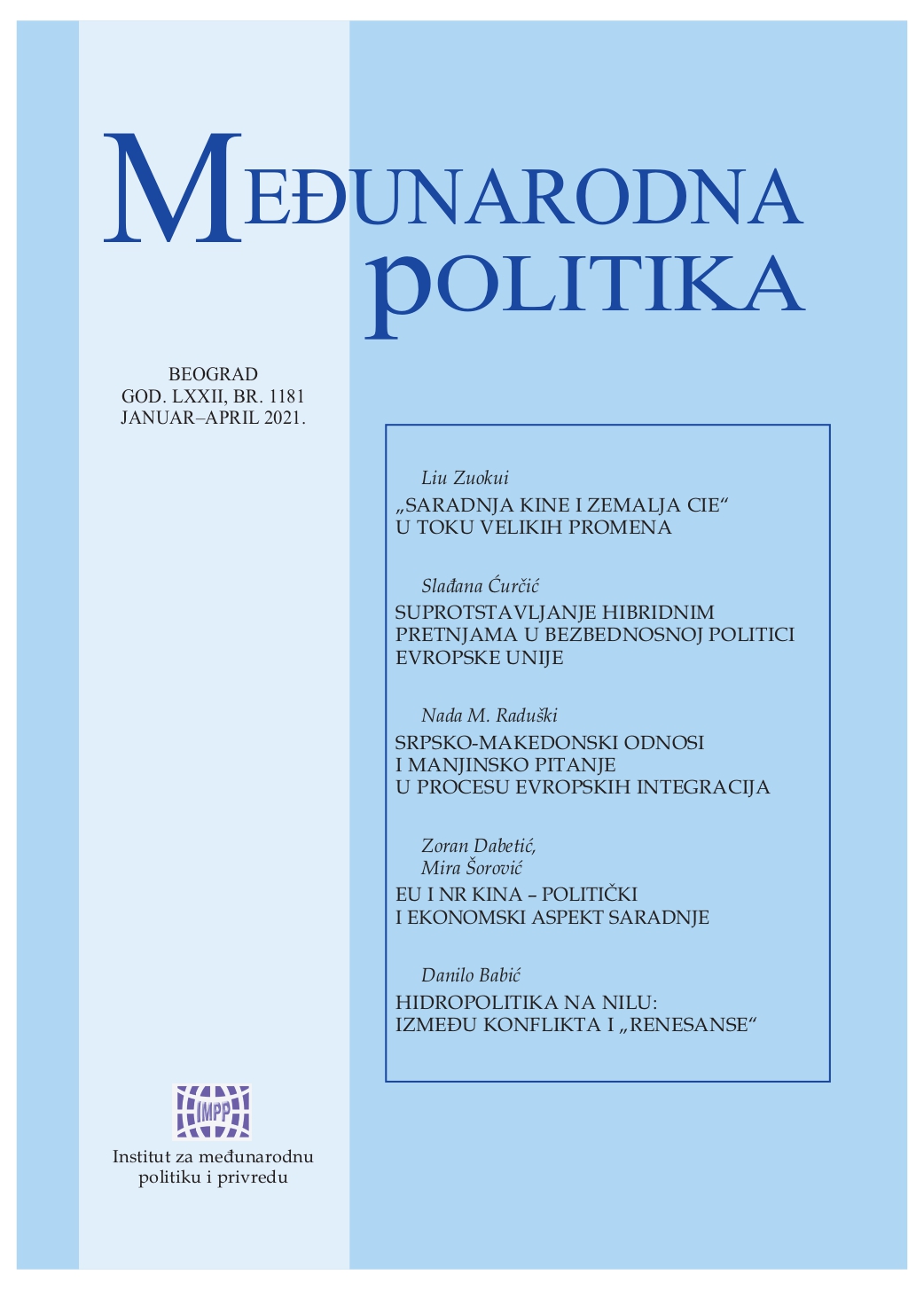Suprotstavljanje hibridnim pretnjama u bezbednosnoj politici Evropske unije
Countering hybrid threats in the European Union security policy
Author(s): Slađana ĆurčićSubject(s): Politics / Political Sciences, Security and defense
Published by: Институт за међународну политику и привреду
Keywords: European Union; hybrid threats; hybrid war; security policy; contemporary conflicts; security environment
Summary/Abstract: The aim of this paper is to present the thematisation of hybrid threats in the security policy of the European Union and the way in which the Union counters these threats on the practical-political level. Based on a qualitative analysis of the content of strategic documents, as a methodological approach and analysis of the political and institutional framework in this field, it is ascertained that the EU is significantly oriented to hybrid threats in its security policy. However, the legitimate conduct of such a policy requires more coherence and precision in the explanation and operationalisation of hybrid threats, given their vague and complex nature. In other words, it is concluded that the gradual transition to a multipolar world order, associated with the simultaneous strengthening of the technological dimension of modern conflicts and the Union's coping with a set of crises, new uncertainties and reconsideration of its own “identity” and role on the global geopolitical scene can be understood as a context that generated a “picture of complexity and hybridity” and a European perception of security threats as hybrid, as well.The aim of this paper is to present the thematisation of hybrid threats in the security policy of the European Union and the way in which the Union counters these threats on the practical-political level. Based on a qualitative analysis of the content of strategic documents, as a methodological approach and analysis of the political and institutional framework in this field, it is ascertained that the EU is significantly oriented to hybrid threats in its security policy. However, the legitimate conduct of such a policy requires more coherence and precision in the explanation and operationalisation of hybrid threats, given their vague and complex nature. In other words, it is concluded that the gradual transition to a multipolar world order, associated with the simultaneous strengthening of the technological dimension of modern conflicts and the Union's coping with a set of crises, new uncertainties and reconsideration of its own “identity” and role on the global geopolitical scene can be understood as a context that generated a “picture of complexity and hybridity” and a European perception of security threats as hybrid, as well.
Journal: Међународнa пoлитика
- Issue Year: 72/2021
- Issue No: 1181
- Page Range: 23-50
- Page Count: 28
- Language: Serbian

